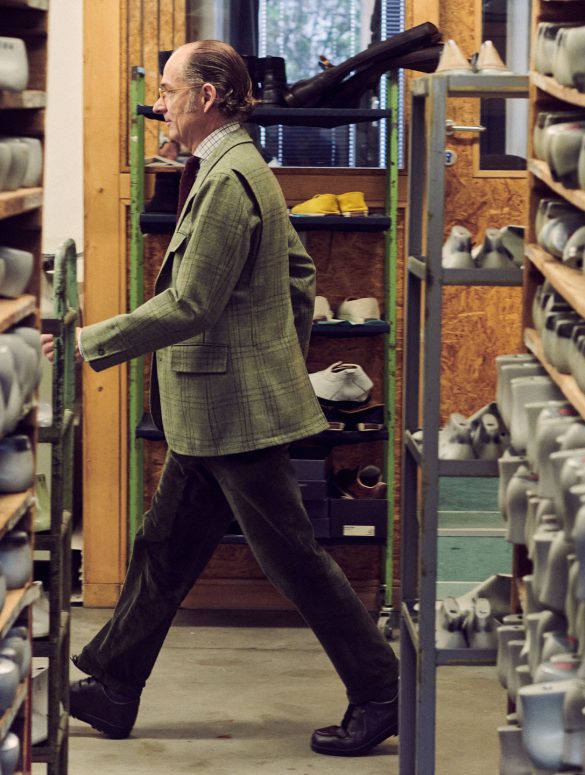According to the company chronicle, the history of the Austrian shoe manufacturer Ludwig Reiter begins in 1885. In this year, Ludwig Reiter I opened a shoemaker’s workshop in Vienna together with his wife Anna. 100 years later, in 1985, his great-grandson Til Reiter took over the management of the company. During this period, a small craft business had become a factory specializing in shoes made using the Goodyear method. Or, to use the somewhat less romantic term, a factory for welted shoes. The only one left in Vienna.
Shoes have been welted by hand in Europe since the Baroque era. The welted style was one of several that existed in parallel. It is not known which shoemaker was the first to come up with the idea of attaching the upper and welt to the underside of the insole with a seam. The advantages of this method soon made it the preferred production method for shoes that needed to be particularly dimensionally stable and durable.
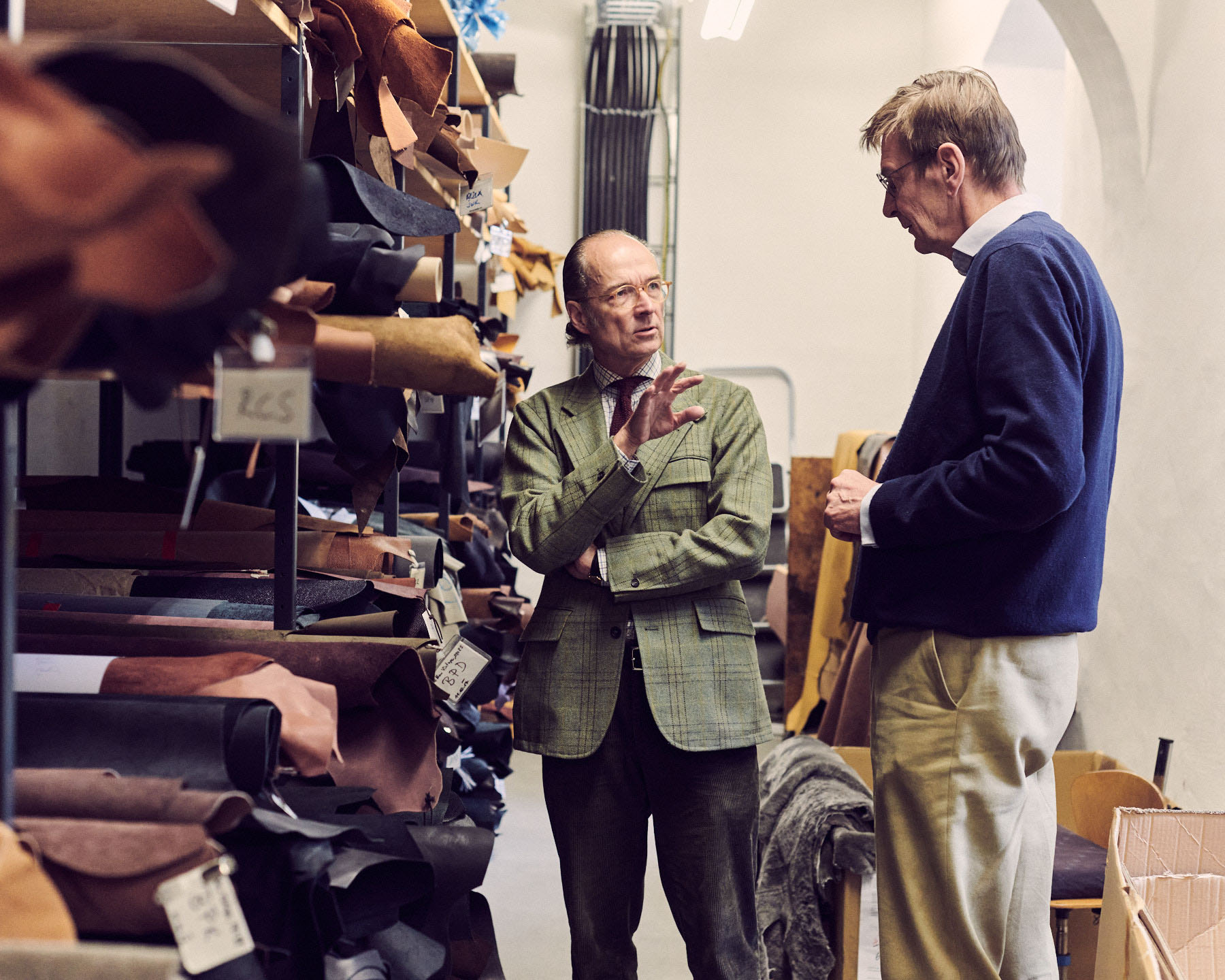
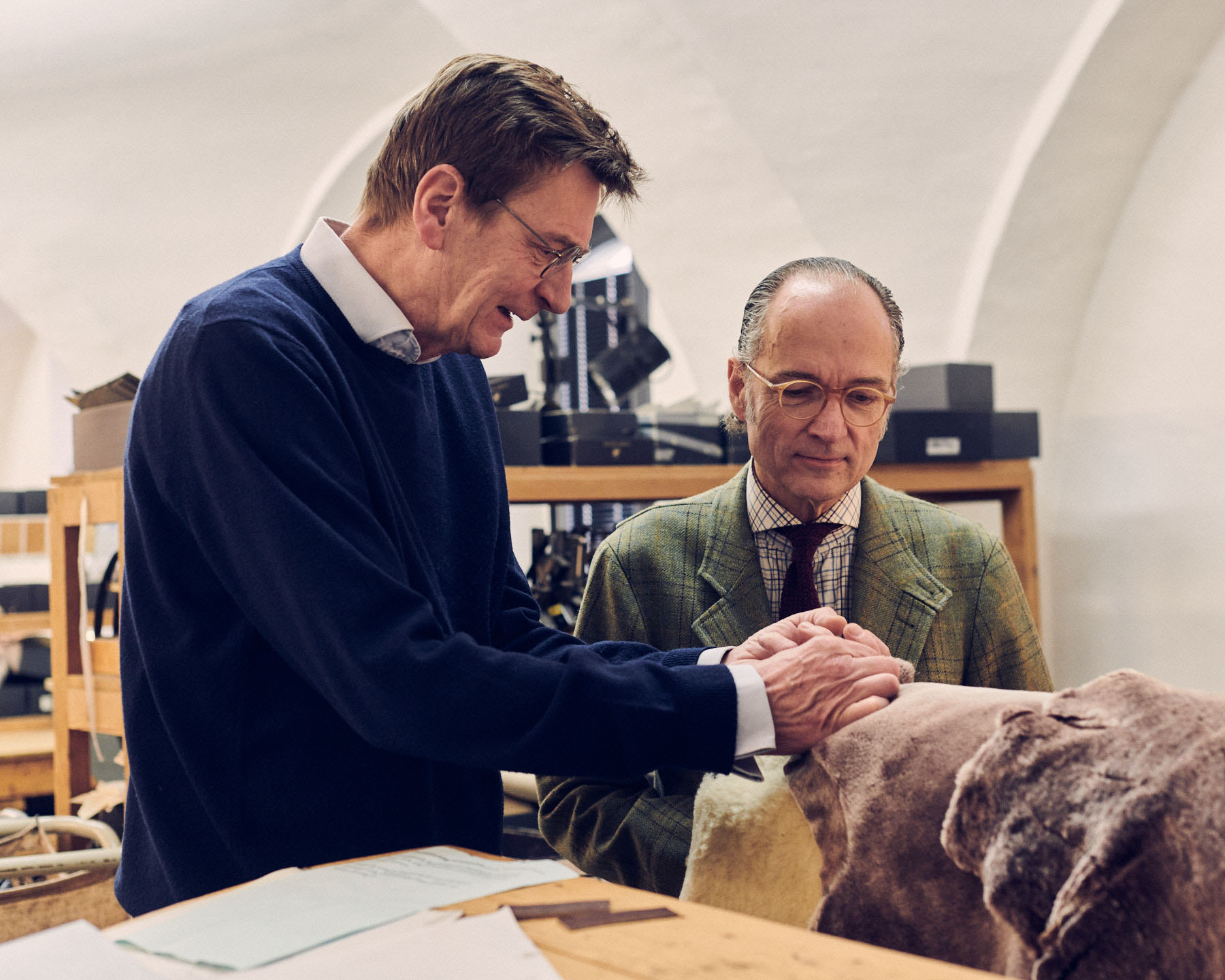
In the 16th century, shoemaking was still purely manual work; anyone who needed a lot of shoes, e.g. the military, needed a lot of craftsmen. As a rule, they worked in small workshops, often at home in the countryside. Most of the time, the whole family had to help. The women sewed the shafts, the children helped out or ran errands. The energy-sapping soil construction was men’s work. As the demand for high-quality ready-made shoes grew in the 19th century, this created a lot of work for the craftsmen.
Ludwig Reiter also benefited from large orders at the time, e.g. his workshop supplied welted officers’ shoes, ankle boots for dress uniforms and riding boots. At that time, working methods were no longer completely manual, so ready-made laths were produced in series on the lathe from 1821 onwards. The first sewing machine for leather came onto the market in 1856. However, the shafts were still pulled over the lasts by hand, the only aid being pliers. However, stitching and doubling was still done by hand. In a workshop like Ludwig Reiter’s, work was carried out in much the same way as we can still see today with traditionally-minded bespoke shoemakers.
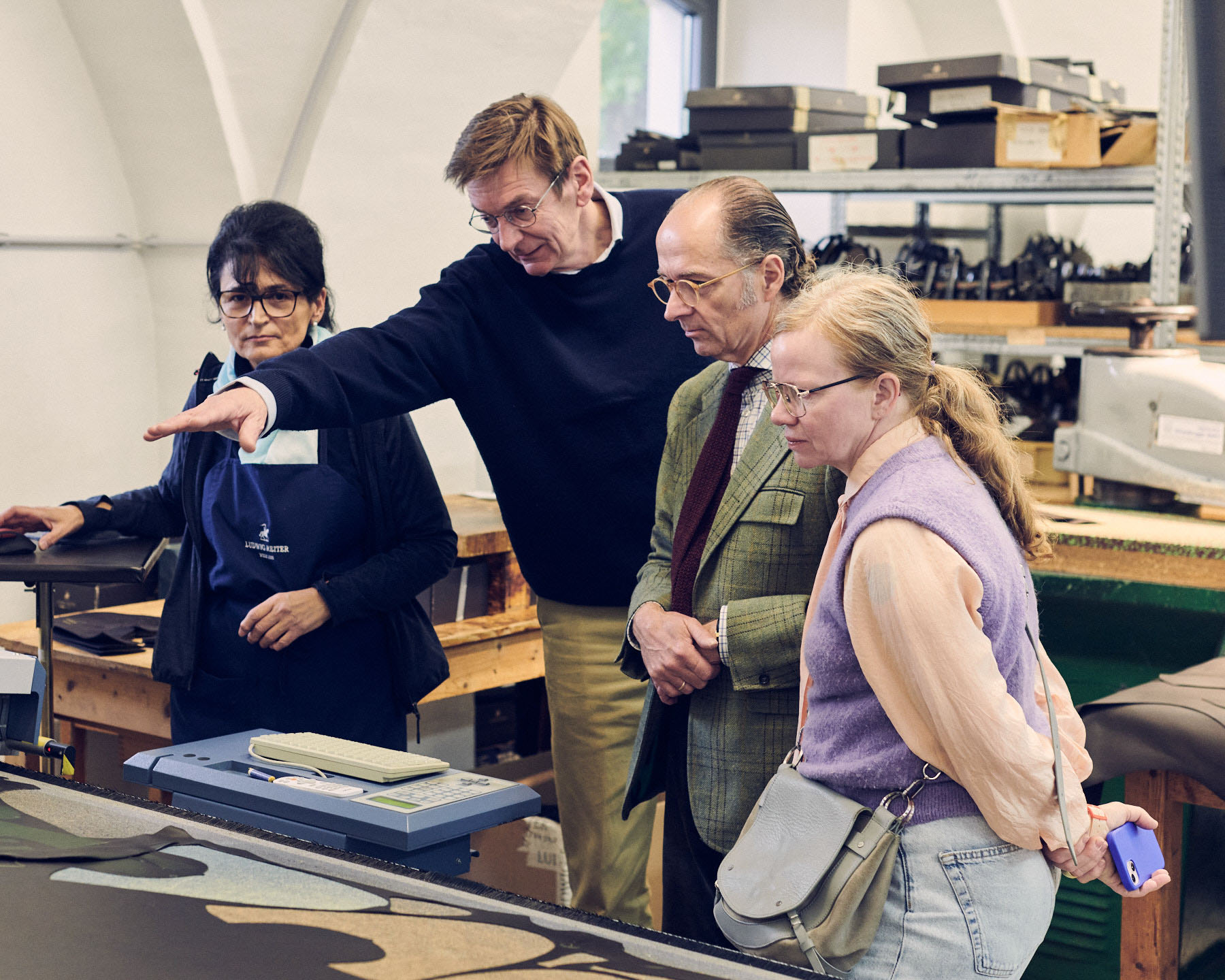
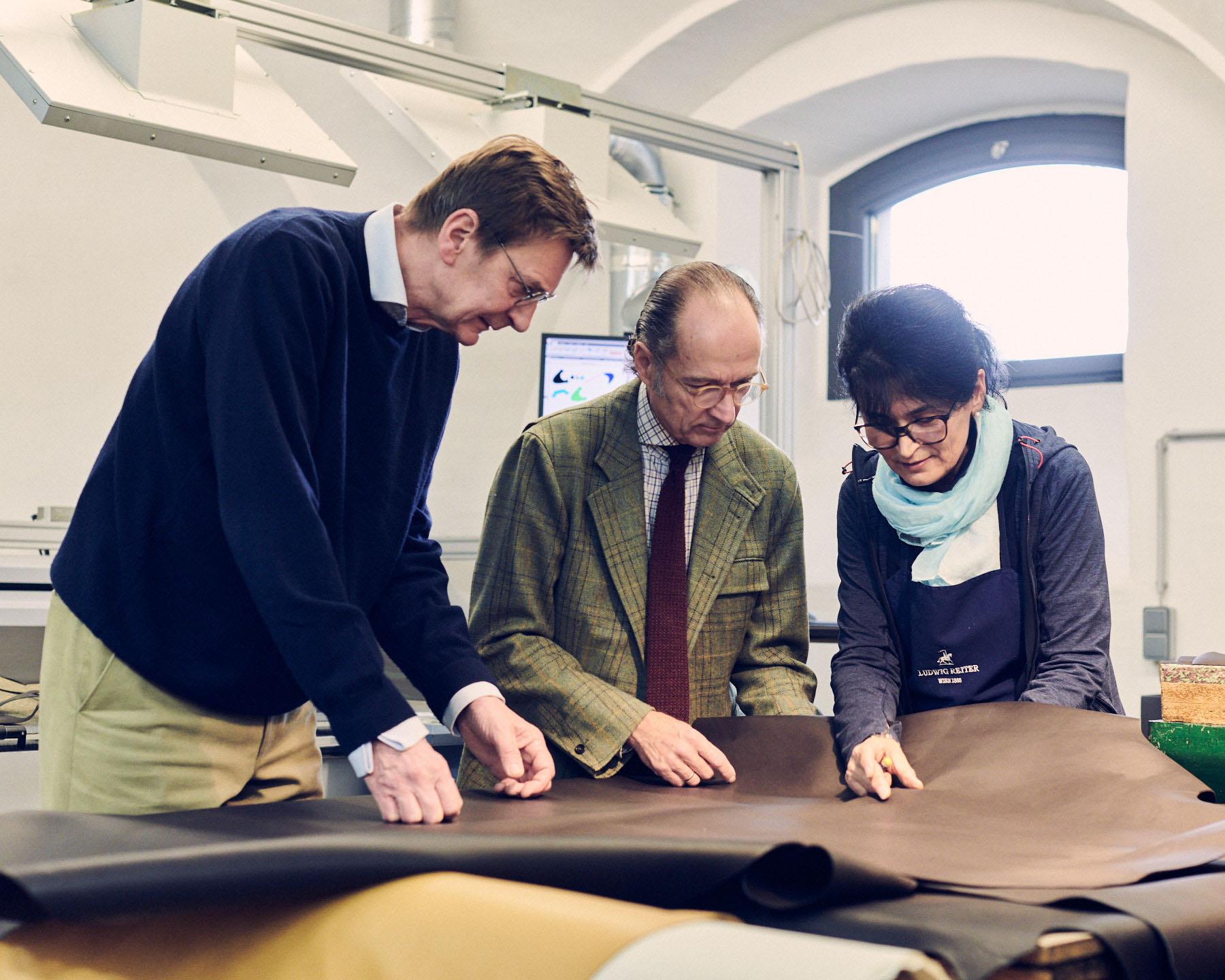
In the USA, the shoe industry was already further ahead. In 1869, a grooving machine was invented, which was improved by several patents under the direction of the American entrepreneur Charles Goodyear. It made it possible to sew the upper, frame and insole together by machine. Thanks to this machine, this operation, the grooving, was quicker and did not require any effort on the part of the craftsman. The machine now did the work, the worker just operated it. Goodyear later developed a machine with which the outsole could be doubled onto the frame. This was also very labor-intensive and time-consuming manual work.
News of these machines spread to Central Europe via England and so Ludwig Reiter II, the founder’s son, went on a journey after his apprenticeship in his parents’ company, which eventually took him to the USA. He stayed there from 1902 to 1908, during which time he studied the machine-assisted production method for welted shoes, which was now known as the Goodyear method.
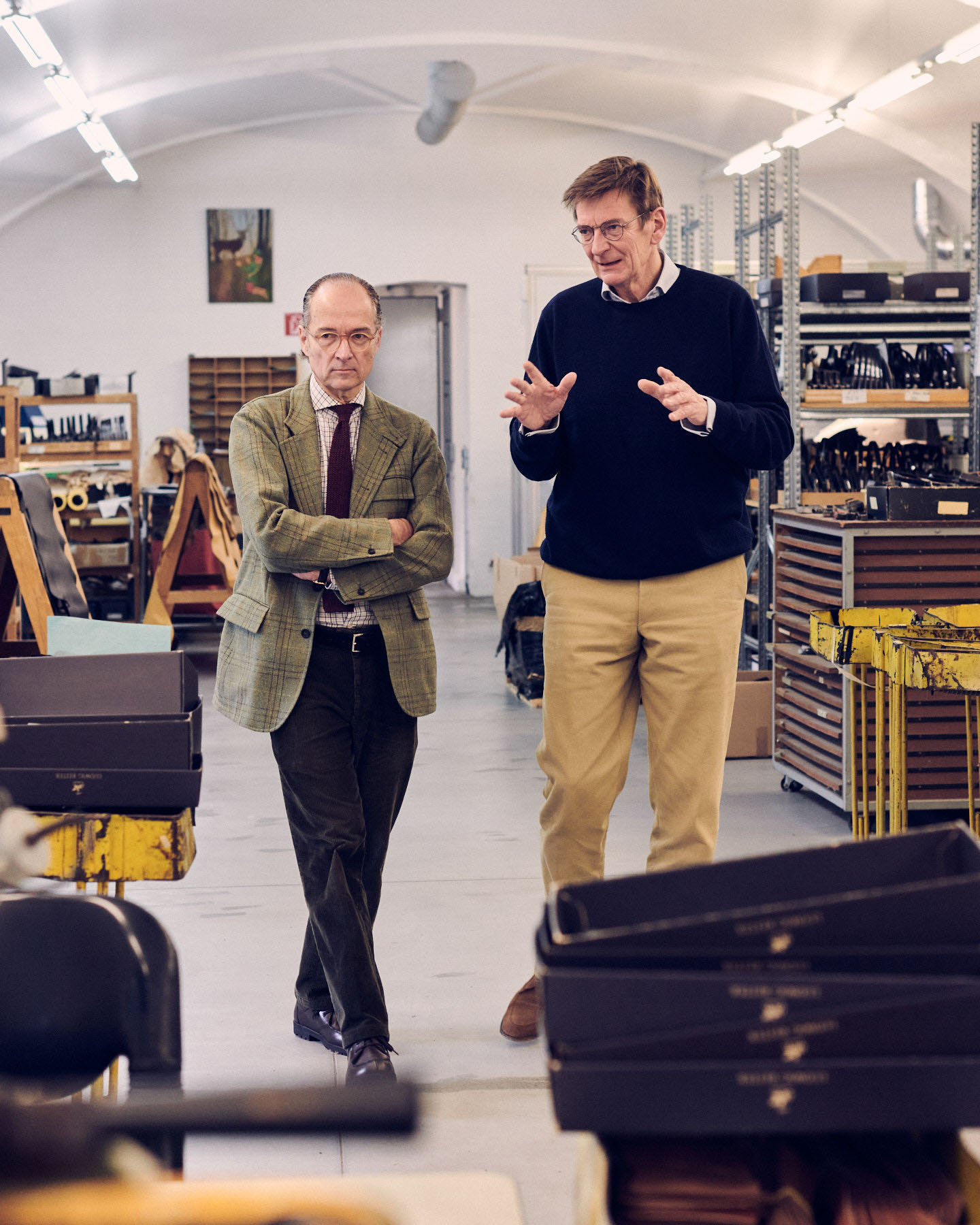
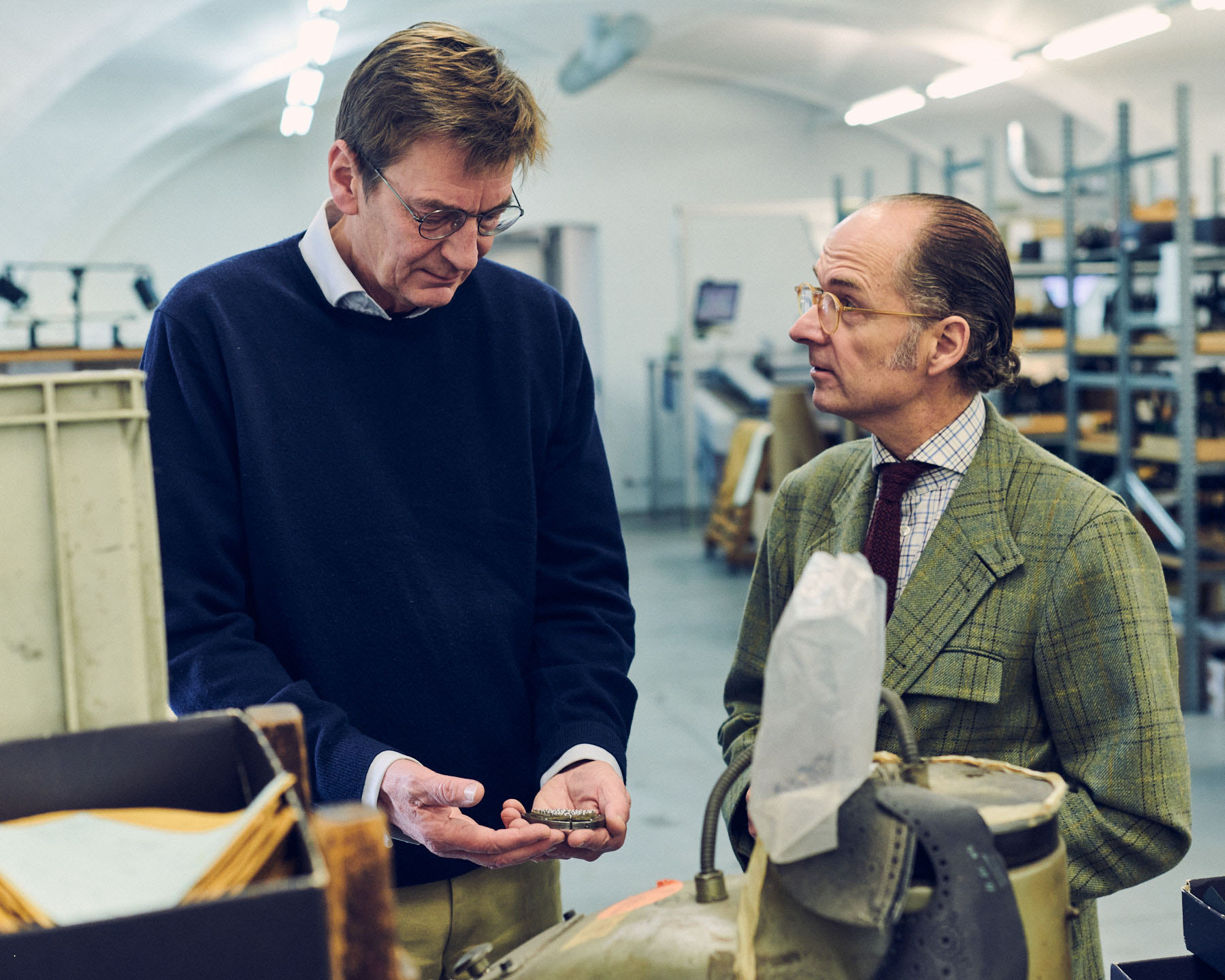
When Ludwig Reiter II returned, from 1909 he gradually transformed his parents’ craft business into a small shoe factory using the latest technology of the time. The company moved into new premises and ten years later, in 1919, when the number of employees had grown to 70, opened its first shoe store in Vienna, the “Schuhhaus Piccadilly” at Wiedner Hauptstraße 41 in the IV district. “Piccadilly” was also the name of a shoe brand created by Ludwig Reiter that was sold there.
In the 1920s and 1930s, Ludwig Reiter developed into one of the leading Viennese shoe manufacturers, and some of the models produced today date back to this period. In 1934, the “Fox” brand was launched, offering welted shoes for men and women. In 1937, production was expanded again and the factory moved to Wiener Neustadt. Boots were made there for the Austrian military. In 1940, production moved to the 17th district of Vienna. During the war, shoes and boots for the police and military were manufactured there in addition to shoes for civilian use.
At the end of the war, the raw material and leather warehouse was looted, but the machines remained intact. This meant that production could soon be resumed. From 1950, Ludwig Reiter concentrated on even higher quality welted shoes, which were marketed under the new “Fox Medana” brand. These shoes were considered “elegant, breathable” and “anatomically and medically correct”. 1960 Ludwig Reiter III takes over the management of the company. Under his leadership, Ludwig Reiter developed into one of the most respected shoe manufacturers in the country. During this decade, several stores were opened in Vienna, and in 1966 around 130 employees were working for the company.
Contrary to the trend that led shoe factories in Germany and Austria to abandon the production of welted shoes in the 1960s and 1970s, Ludwig Reiter held on to the style. At the beginning of the 1980s, this proved to be a good decision. A new generation began to take an interest in classic clothing and welted shoes. After two decades of dismantling style, young men discovered the world of tailored fashion, hand-sewn ties and manufactured footwear that had been spurned by their fathers’ generation. A few men’s outfitters became trailblazers, with the marvels of Kiton and Chester Barrie, Barbour and Husky, Robert Friedman and Borrelli, William Lockie and Malo, Alden, Church’s and Ludwig Reiter beckoning in their shop windows.
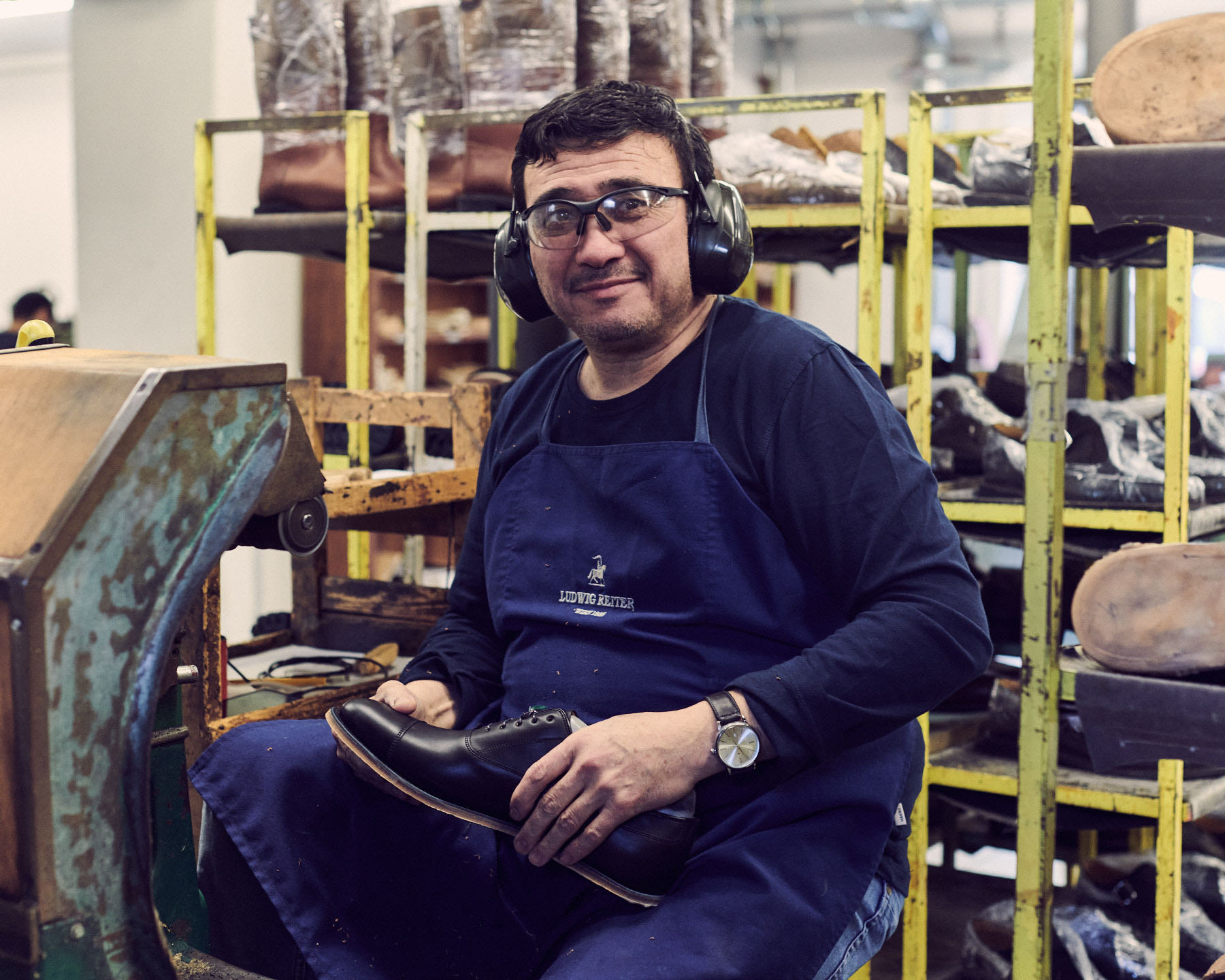
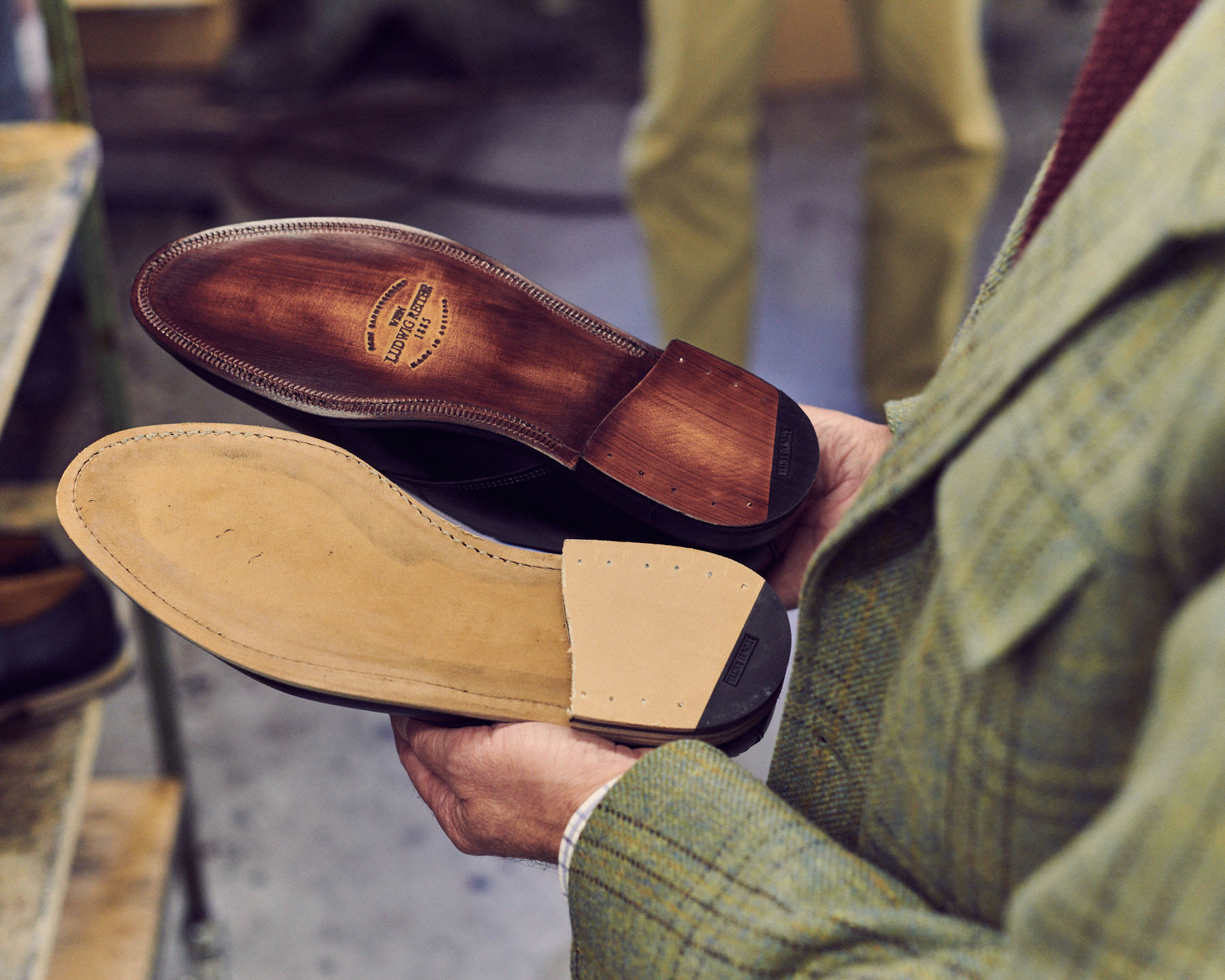
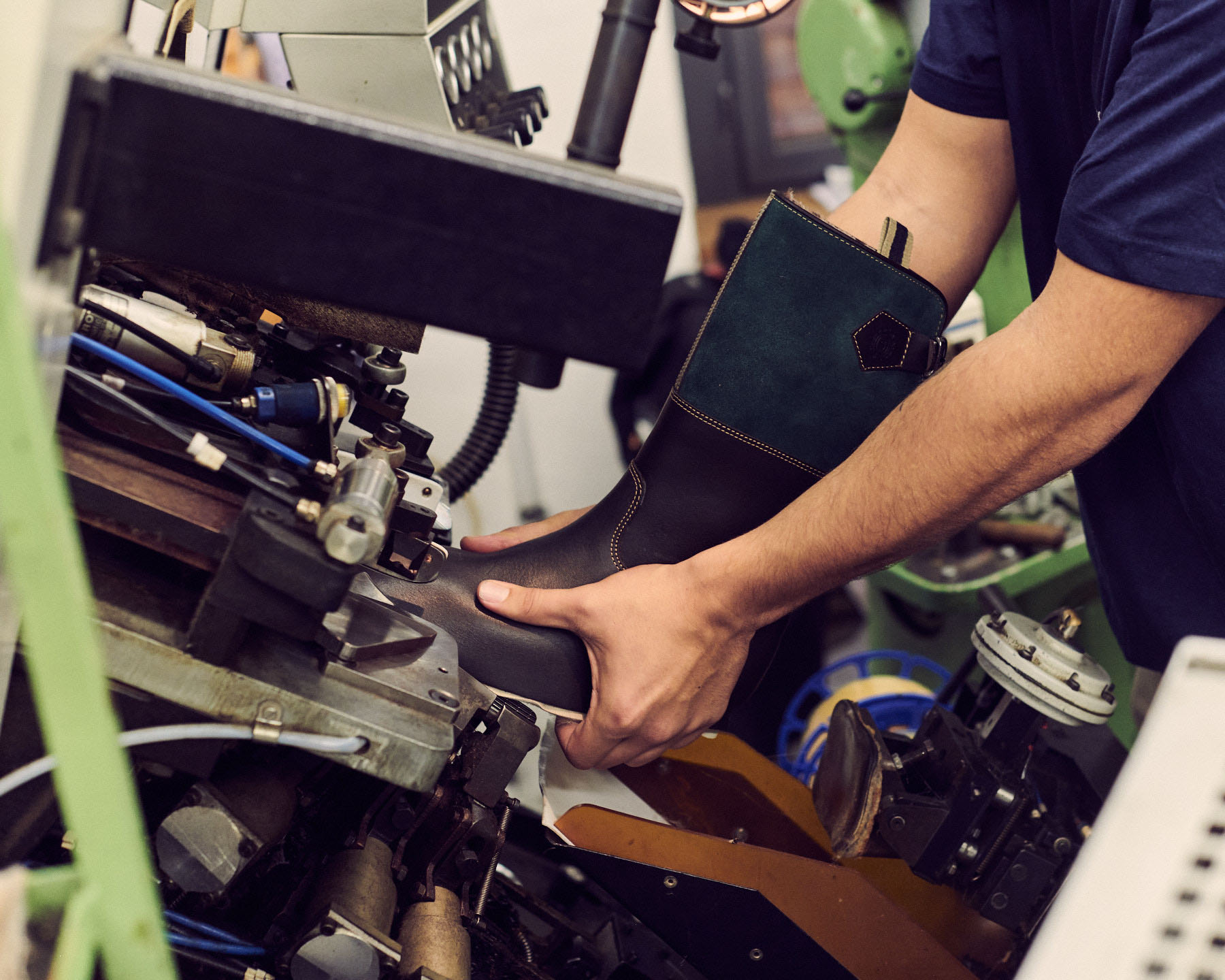
It was during this time that I first encountered Ludwig Reiter shoes. When I came to Hanover to study at the end of the 1980s, there were still several menswear stores there, including two that belonged to the avant-garde: Heinrich’s and H. B. Möller. At that time, Heinrich’s carried Church’s Shoes, while H. B. Möller specialized in Alden Shoes. Heinrich’s also stocked Ludwig Reiter for a while and that’s where I saw these shoes for the first time. They were completely different from the English shoes of the same design. First the flatter heel caught the eye, then the completely different shape of the toe cap. Seen from above, it was slightly more rounded, seen from the side, higher. The design of the catalog also differed from the British brochures. With black and white photos, the brochure looked modern and dignified at the same time. And then these model names: Esterhazy, Archduke Johann, Slatin Pasha. I finally managed to buy a pair in the sale: A wine-red tasseled loafer made from Scotchgrain leather with a wing cap and perforated pattern decoration.
Ludwig Reiter II recognized early on that the future lay in the Goodyear method. At least for manufacturers who want to deliver more than just the quantities of a manual workshop. Till Reiter once again had the foresight to look for sensible and promising extensions to his brand in good time. In 1992, he acquired the C. Kitzmantel work shoe factory and with it new production techniques and shoe types. One child of this takeover is, for example, the very successful “Maronibater” winter boot, now one of the company’s best-known models. The trainers of the house could also only be realized after the acquisition of C. Kitzmantel.
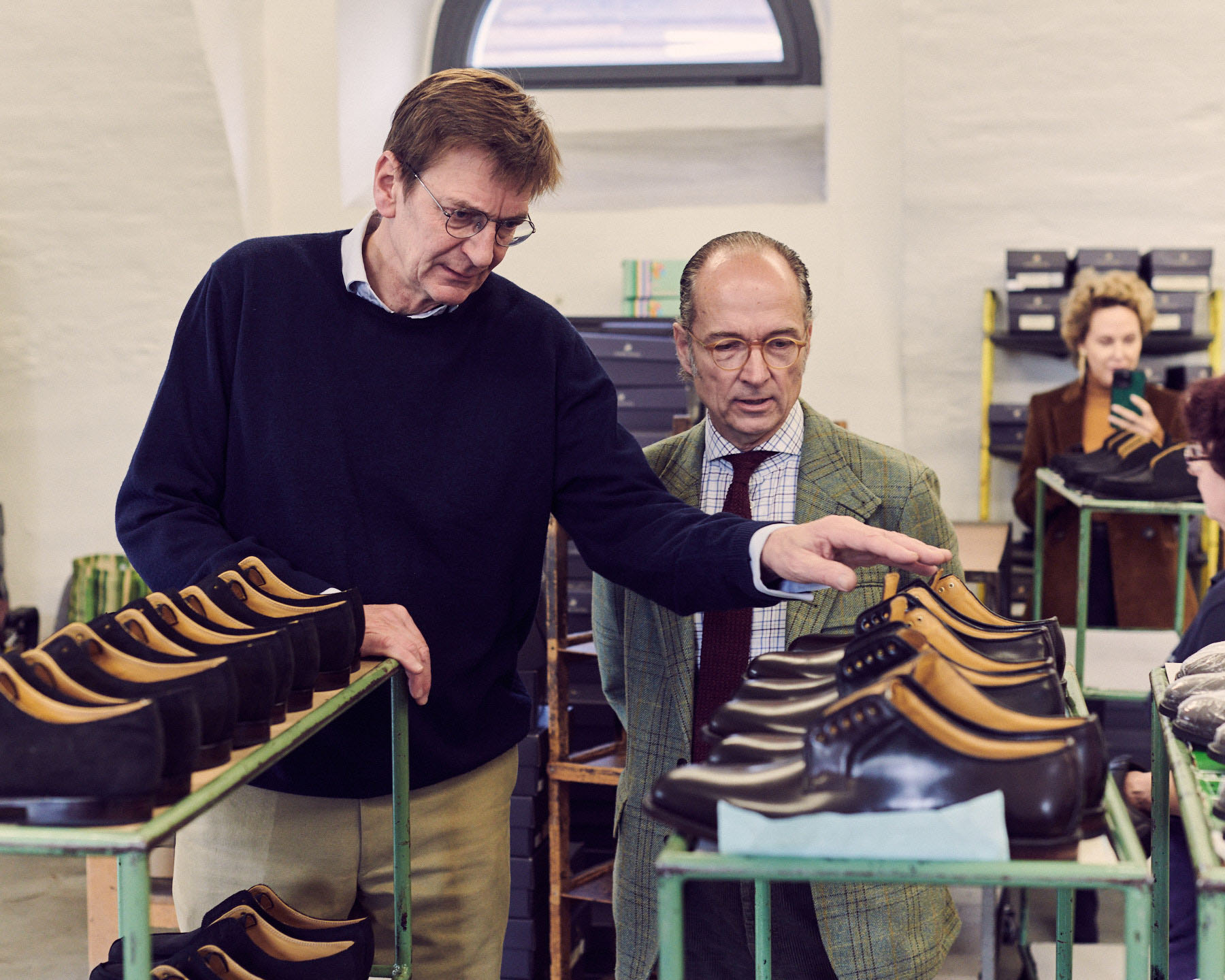
In 1995, Ludwig Reiter once again proved his good instincts and was the first to bring out lightweight sports shoes in a welted design, thus setting a new trend. In the same year, Ludwig Reiher opens his first flagship store in the Drei-Mäderl-Haus in Vienna. He is followed over the next few years by Ludwig-Reiter stores in Austria, Germany and Switzerland. There are currently six Ludwig Reiter stores in Austria, seven in Germany and one in Switzerland. In addition, the Ludwig Reiter website lists numerous retailers where the Austrian brand’s shoes are available. Including two addresses in England, four in Italy, six in Norway and one in Manila in the Philippines.
According to this list, Germany is the most important market, at least in terms of the number of trading partners. In fact, Ludwig Reiter occupies a unique position in this country, as there is no other brand of welted footwear in Germany with its own production in its own country. In addition, Ludwig Reiter benefits on the German market from the fact that Austria and Vienna enjoy high popularity ratings among the target group.

I have met Till Reiter time and again since the late 1990s, e.g. at trade fairs or at the celebration of the 150th anniversary of the fabric store Jungmann & Neffe in Vienna in 2016. During the last two editions of Pitti Uomo before the pandemic, we had somewhat more detailed discussions, which also gave rise to the idea of visiting production at the company’s headquarters at Gut Süßenbrunn. In 2008, Ludwig Reiter acquired the listed estate, parts of which were first depicted on a copperplate engraving in 1672.
It was carefully renovated and converted over a period of two years. The company moved into its new location in 2010. The welted shoes have been made there ever since. As I had never seen Ludwig Reiter’s production before, I gladly accepted the invitation to Süßenbrunn. In November 2023, the time had come. I stayed in a hotel in the center of Vienna and was picked up by a driver in the morning. The journey took us to the outskirts of Vienna. Gut Süßenbrunn is situated in a small village.
The estate is more extensive and the buildings larger than I had expected from the photos on Ludwig Reiter’s website. Till Reiter, his daughter Anna Reiter-Smith and her husband, photographer Jamie McGregor-Smith, were waiting for me in the parking lot. He has taken on the task of documenting my visit. As we entered the production area, I noticed three differences from the shoe factories I have visited in Northampton: It was brighter, quieter and better ventilated. Even though Gut Süßenbrunn is older than the factories in England, which are mostly industrial buildings from the late 19th century that were ultra-modern in their day, production at Ludwig Reiter has been installed in the historic facility in line with today’s requirements.
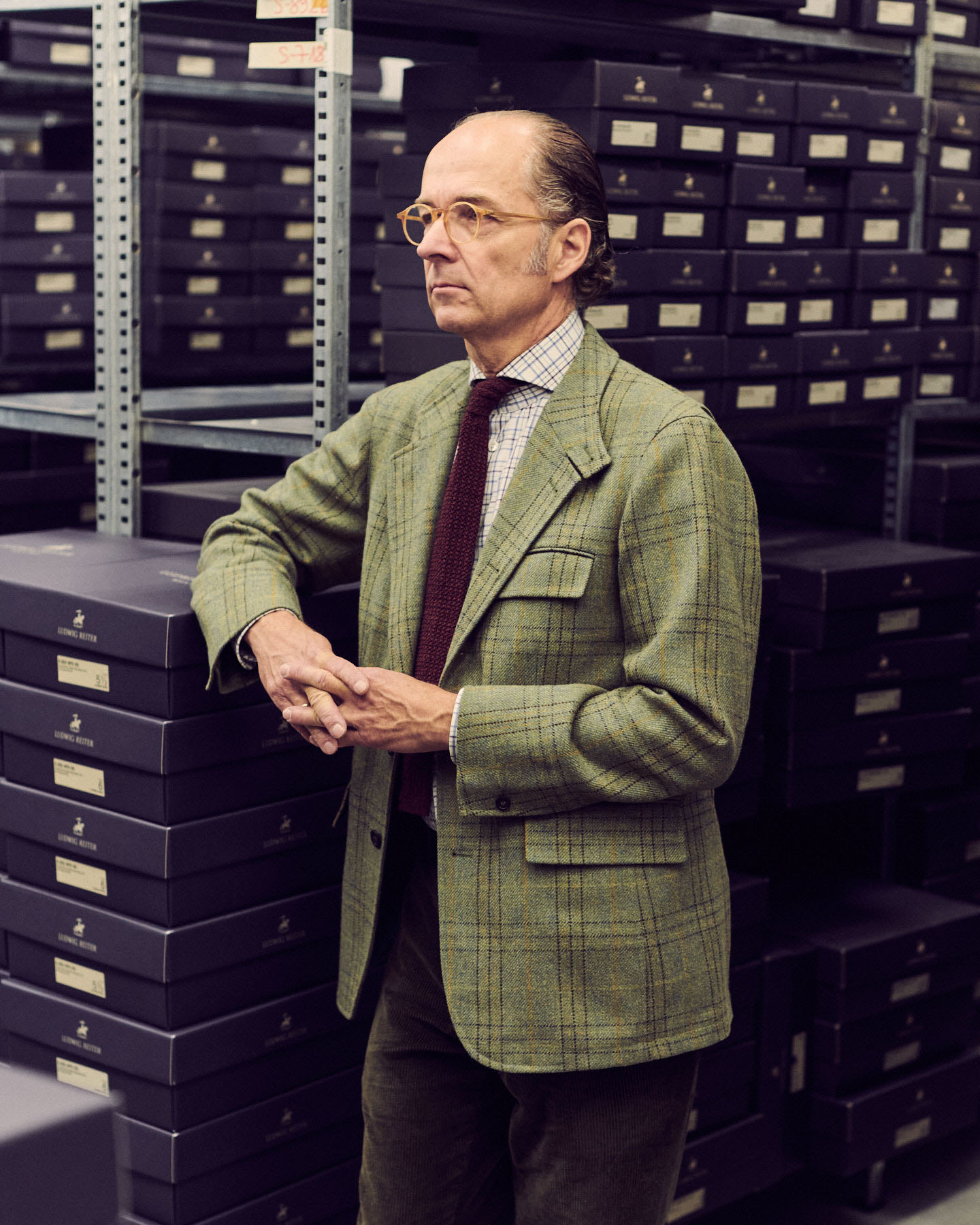
In Northampton, land was perhaps so expensive in the 19th century that the shoe factories were housed in multi-storey buildings. The disadvantage is that the shoes have to be moved through several floors during the production process. As far as the volume is concerned, it can’t really have been the machines, because Ludwig Reiter uses the same technology, some of which dates back to the 19th century. And the more modern machines, e.g. those that pull the shaft over the last, only make hissing noises. Perhaps the lower noise level is due to the fact that the workstations in Süßenbrunn are spread over a larger area and people don’t sit so close together. Perhaps they also speak more quietly. The odor must be related to the adhesives used and, of course, the ventilation technology.
The shoe manufacturing process at Ludwig Reiter follows the sequence that all makers of welted shoes adhere to. The shaft is made first. This is then pulled over the last after the insole has been fixed to the underside. The upper is then sewn to the underside of the insole together with a narrow strip of leather, the welt. This seam is invisible in the finished shoe, as it is then covered by the outsole.
The seam that is visible on the outer edge of the leather outsole is the seam, known as the double seam, with which the outsole is attached to the welt. The invisible seam, also known as a single seam, is the first essential feature of the welted style. The single-technique seam connects the shaft and base in a durable yet flexible way. The second, also very important feature is the double seam. It ensures a stable connection between the sole, frame and upper, but the double seam can be separated if a new outsole needs to be fitted.
The two features, single stitching and double stitching, make the welted shoe particularly durable and easy to repair. Incidentally, the double seam is not always visible. Some manufacturers hide them in the leather sole by pressing the stitch channel together and gluing it or concealing it with a glued-on insole. It is also often not visible on shoes with synthetic soles. The double seam then goes through a thin leather midsole, onto which the desired rubber outsole is later glued.
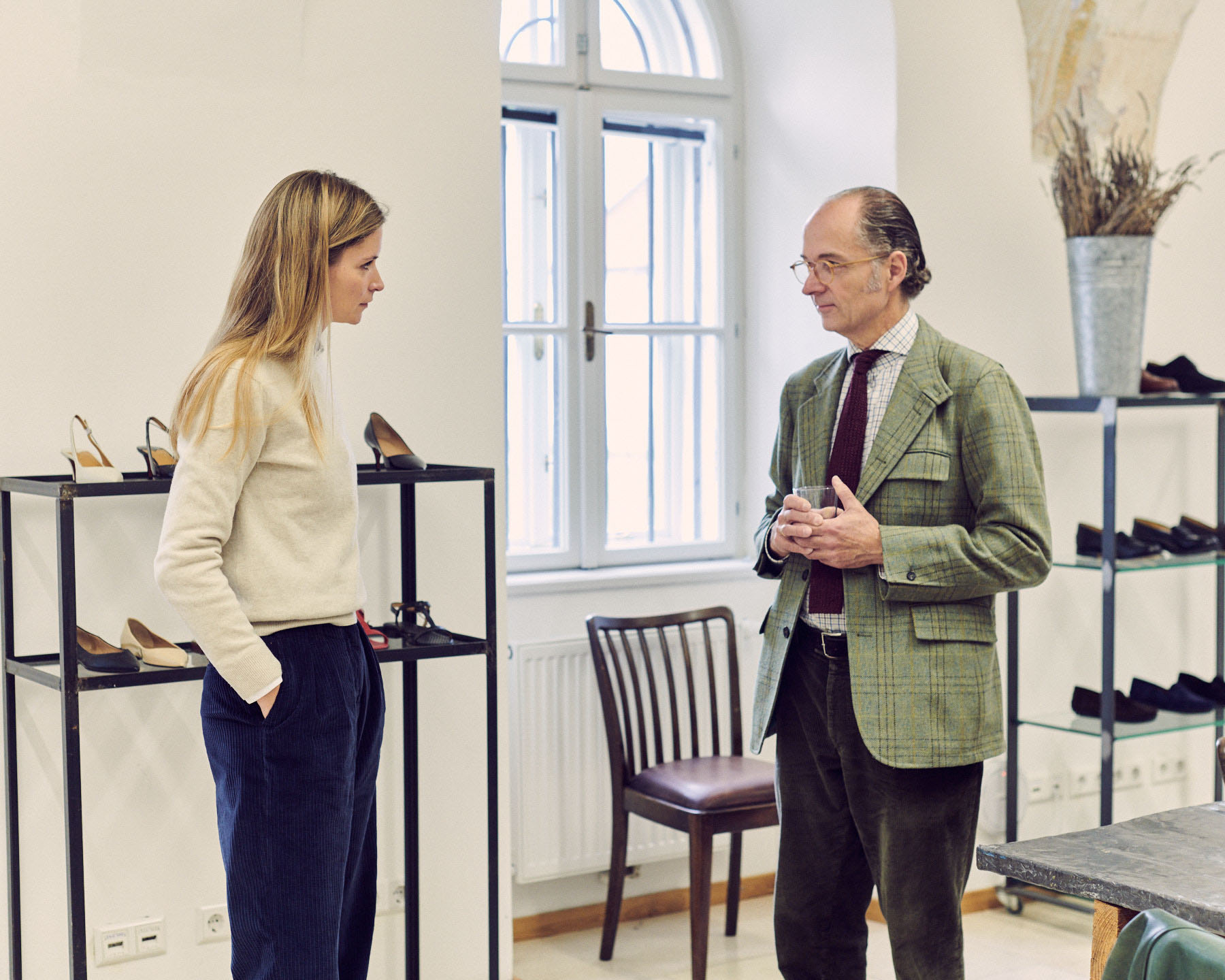
If you know the basic production process, it is relatively easy to assign the individual work steps. It all starts with the selection of the leather for cutting the upper parts. Leather is tanned animal skin. As a natural product, unlike woven fabric, for example, it has an uneven thickness and, despite all the care taken in keeping and careful pre-selection, is subject to blemishes. The aim is for the two shoes that make up a pair to fit together as well as possible. The two shoes must really form a pair and there must not be a hint of a difference in color between the right and left. Nor should they feel different due to unequal leather thicknesses. That sounds like a matter of course, but it is the result of painstaking work. Faults in the leather are clearly marked with a pen, then the outlines of the individual shaft parts are projected onto the hat and cut out. Projection means that templates no longer need to be placed on the leather.
The upper parts are then stitched together using a sewing machine. All shoemakers have been doing this since the end of the 19th century, including traditional bespoke shoemakers. Before sewing them together, the edges are sharpened, i.e. sanded down towards the edge. This makes the leather thinner at the edges and the overlapping shaft parts do not form a bulge after being sewn together. Now add the caps and the lining. This increases stability and prevents the caps or lining from shifting when sewn together. After gluing the socket parts together, leave them to rest for a while until they have dried. When topstitching, make sure that the raw edges lie on top of each other.
The socket is pulled over the last with the help of a machine. This work step, called tweaking, only takes seconds for Ludwig Reiter. Craftsmen pull the shaft over the last piece by piece using pliers. Various pinchers and pinching machines were designed as early as the 19th century, also for use in the skilled trades. Simple tweezers made it easier to tweak the caps, for example. Pinching the hand has no recognizable advantage for me. Bespoke shoemakers do not use machines for two reasons: Firstly, the investment is generally not worthwhile because the quantities are too small. Secondly, the machine would have to be readjusted for each strip. The manual tweaking is quicker in the end.
The upper, welt and insole are joined with a seam using the Goodyear sewing machine. This machine has been in use since the late 19th century. Since then, only craftsmen still sew the shoes by hand. This can be done quickly, but requires a great deal of experience and sensitivity on the part of the worker. At Ludwig Reiter, there are only a few specialists who have mastered this work step, which is so important for the Goodyear method.
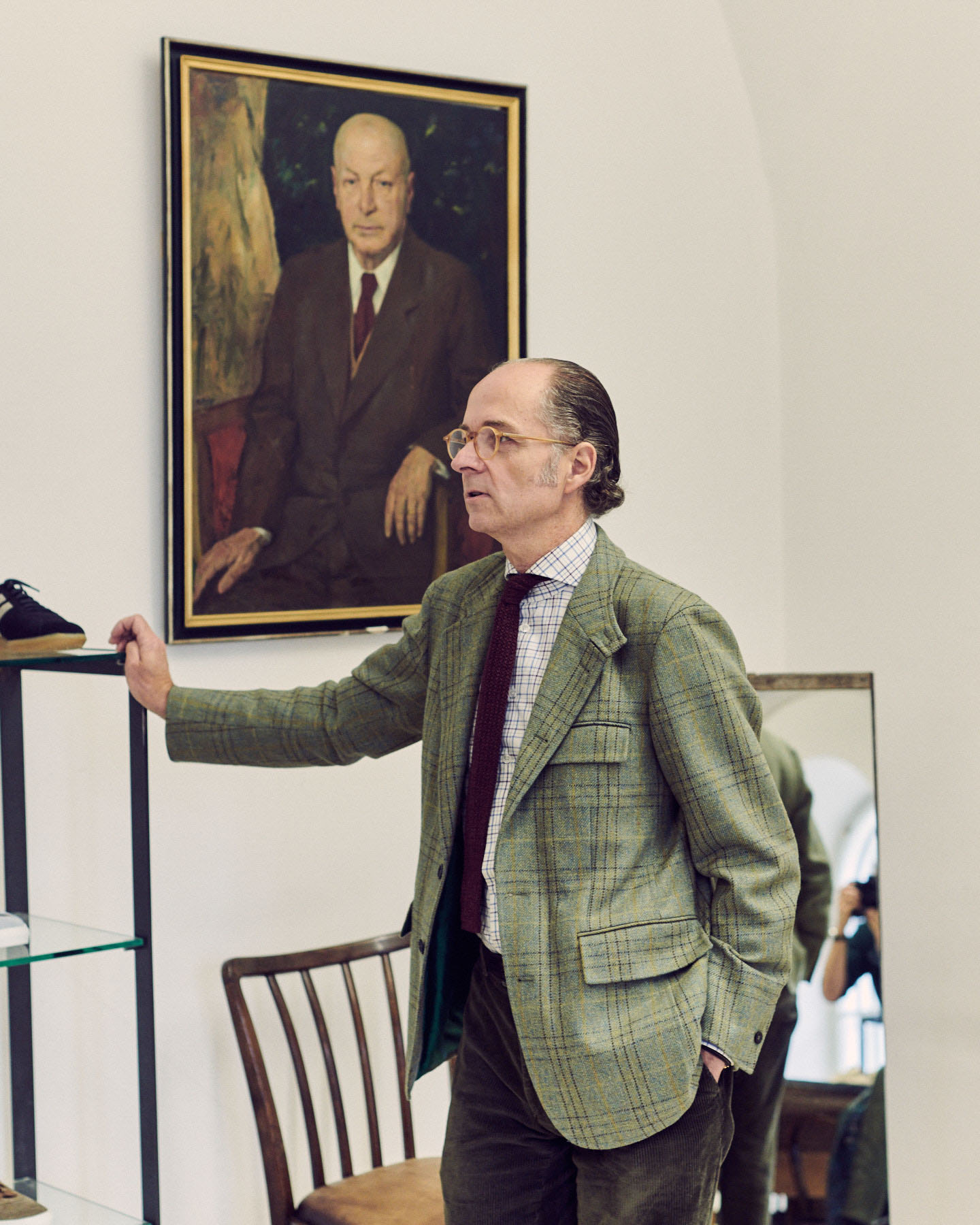
A cork plate, also known as a balling, is inserted under the forefoot beneath the insole. The inner edge of the frame “frames” them. An individual footprint of the wearer is formed in the cork plate when worn. The cork layer also cushions the footfall and absorbs moisture. A footbed does not replace the cork encasement, as it only forms an imprint of the foot, i.e. the cork encasement does not support the foot. However, this is not a problem if there are no misalignments.
Now the leather outsole is “doubled up”, i.e. sewn on. The heel is made up of several layers and is attached to the leather outsole with nails. A rubber corner is inserted at the outer edge of the heel to cushion the step and prevent slipping. Until the invention of rubber, the heel was reinforced with brass corners or nails. In shoes with rubber soles, the outsole is not doubled up, but a thin midsole to which the outsole is then glued. For shoes with leather soles, the outsole and heel are dyed with leather color as desired. This is part of the final work. The edges of the sole and heel were previously sealed with wax to prevent moisture from penetrating.
Finally, an employee treats the shoes with paste. The wax paste is worked into the leather with the help of a pointed bone to create the highest shine. The shoe wearer can also use such a bone to smooth scratches in the leather later by rubbing wax paste into the damaged area. New shoes should nevertheless be treated with wax paste again in good time to make the leather supple (with suede shoes it is important that they are thoroughly impregnated with spray before wearing them for the first time). The finished shoes are wrapped in fabric shoe bags and then packed in cardboard boxes. They then go into the large warehouse, which is located right next to the production area.
Shoes sent in by customers via a Ludwig Reiter store are also repaired in the workshop. For Till Reiter, this is a very important service that he definitely wants to offer his customers. It is interesting to see the many patinated and mostly well-kept shoes from older years on the work tables. Some of the shoes show that the owner must think very highly of them, because they are worn to the limit of repairability. Till Reiter does not comment on this, he merely remarks with a smile that in some cases a new pair of shoes would be recommended. Nevertheless, attempts are always made to repair shoes. Not least because the customers who bring their shoes to the workshop for repair are generally loyal buyers.
After visiting the production facilities, we gathered in the factory store. There is a large selection of individual pairs for men and women to choose from, but as in all Ludwig-Reiter stores, you can also order a so-called custom-made pair. I will describe how this works in the second part of the report using the example of the shoes I ordered.
Photography: Jamie McGregor-Smith
